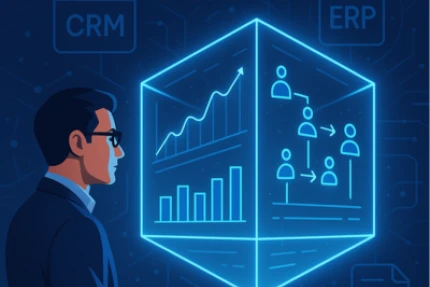
So far, 2022 has proven to be completely different from 2020 – the pandemic has shifted to an endemic for most of the world. However, while leisure and business travel have bounced back, schools are back in person, and gatherings are once again mask-less, the stock market feels eerily similar to early pandemic days, especially for the technology sector. With the backdrop of higher interest rates and inflation, the S&P has lost ~13% YTD, the Nasdaq lost almost 25%, and the NASDAQ emerging cloud index lost ~40%.
While the fundamentals of most tech companies are still strong, valuation multiples have dropped. So, what does this mean for private companies, and how should they navigate this less exuberant financial market?
Current advice from investors is to balance growth with profitability, focusing on efficiency and cash preservation.
Efficiency metrics and KPIs
For private companies shifting strategy in the face of market uncertainty, the following efficiency metrics can help focus conversations with executives and investors and drive greater performance results:
- CAC and CAC Payback: Rather than growth at all costs, now may be a good time to reduce CAC and shorten CAC payback months. Measure and calculate conversion rates and contributions from each lead source and campaign. Then, reduce spend in lower converting channels. Ask how you can be more efficient with the least impact to top-line results. Smaller companies can focus more on organic initiatives rather than paid.
- Bookings per Rep: Focus energy on getting your sales team to become more effective, rather than growing sales at a high clip. Measure activities per rep and ask your reps to pay attention to their most effective activities.
- S&M as % of Revenues: As you “prune”, you should notice sales and marketing costs as a percentage of revenues decreasing month over month.
- Magic Number: Similarly, quarter over quarter, you should notice the Magic Number trending higher as the relationship between dollars spent and dollars earned improves. As a reminder, the formula for Magic number is: (P Revenue – P-1 Revenue) * 4 / P-1 S&M Expense. P=Period.
- Gross margin & COGS: While the bulk of what goes into the cost of goods sold, COGS cannot be easily changed, such as license fees for embedded third-party apps or application hosting and monitoring costs, this is a good time to dissect customer onboarding, support, and professional services costs. The goal is to identify bottlenecks that require manual processes and automate them wherever possible, ultimately reducing ongoing COGS and achieving a better Gross Margin.
While there are many SaaS KPIs and efficiency metrics to which CEOs and CFOs must pay attention, the above efficiency metrics are especially important during this period of turbulence and uncertainty.



